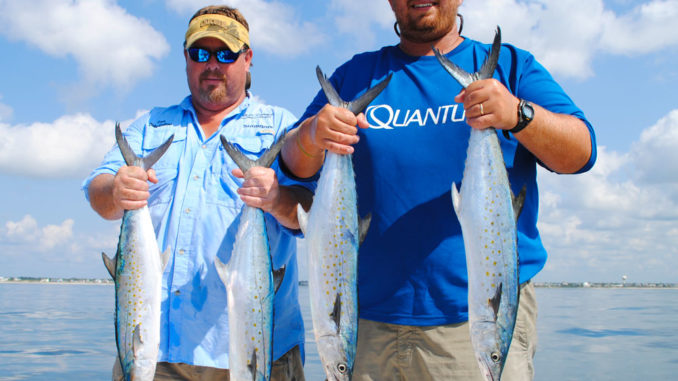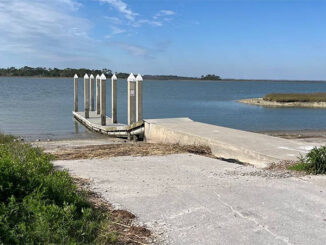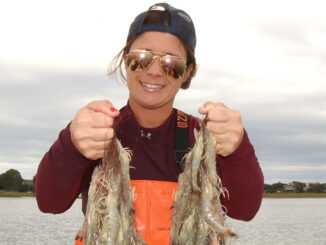
Lowcountry anglers will get plenty of nearshore action this month
The weather is hot this time of year, and so is fishing or Spanish mackerel in South Carolina’s Lowcountry, especially in the Port Royal Sound and Hilton Head areas. Rick Percy of Reel Chance Charters said he catches them consistently in July using two different tactics that can be equally effective.
“We’ve got two sandbars on both sides of Port Royal Sound near a wreck that’s called ‘the Boiler,’” Percy said. “On the high to falling tide, trolling with a 3/4-ounce bucktail on the edge of those bars and the edge of the breakers is very effective.”
But Percy (803-535-6166) does make a small adjustment to those bucktails, and he said that makes a big difference. He trims back the hair so that it is even with the hook. Also, he does not add a trailer. And when it comes to trolling speed, he has a good tip that he’s learned through his experience on the water.
“The bluefish and Spanish are thick here this time of year, and they’ll both hit these bucktails, but trolling at the right speed will produce more of one species over the other,” he said. “Trolling at 3 to 5 knots, you’ll catch a lot of bluefish, but if you’re trolling at 6 to 8 knots, that’s when you’re catching Spanish.”
The second tactic Percy uses in July is free-lining menhaden over the Fish America Reef just off of Hilton Head Island’s beaches. He said plenty of bigger Spanish mackerel stack up in this area, and they are suckers for menhaden.
“I use a hook with no weight, and you don’t even have to cast,” Percy said. “Once I’m anchored down over the reef, I just open the bail and drop the menhaden right behind the boat, peel a little bit of line off, then let the current carry the bait.
“On some days, you’ll have to weed through some sharks, but the Spanish are there and are easy to catch this way.”
While some fishermen insist on using wire leaders when targeting Spanish, Percy said he gets far more bites — and lands more fish — with 30-pound monofilament leaders. He said they are tough enough to take lots of nicks from these toothy fish. He starts with a leader about 4 feet long, watches for nicks in the line, and cuts the nicked portions of leader down as the day goes on.
No matter which tactic he chooses, Percy pairs 2500 to 3000 series spinning reels with 7-foot, medium-light rods, and he always connects his leader material to his braided mainline with a surgeon’s knot, which he said is easy to tie and extremely strong.




